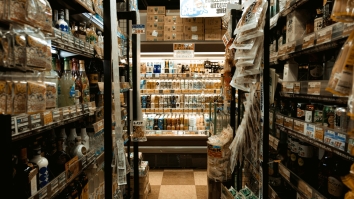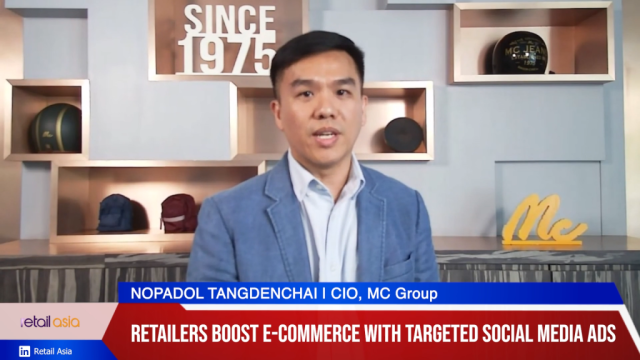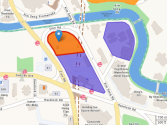
Why the Muslim consumer market in Asia matters
In recent years, brands and retailers are increasingly paying attention to the Muslim consumer market in Asia. Muneerah Bee finds out some of the benefits of tapping this growing consumer segment and why it takes more than a ‘trust mark’ to cater to the significant Muslim populations in the region, especially those in South-east Asia.
executive
Currently, more than 60% of the world’s Muslims reside in Asia and by 2050, there will be an estimated 1.5 billion Muslims in the region as Asia continues to be home to the largest proportion of Muslims in the world, according to a recent report by Pew Research Center.
Needless to say, the rapid growth of the Muslim population in Asia, coupled with the emerging economies in the region, presents an unprecedented growth opportunity for brands and businesses.
Many big brands are now figuring out how they can do better to win over the Muslim community. Q Akashah, executive director of OgilvyNoor, an Islamic branding and marketing consultancy agency, says: “Their biggest competition comes from the many smaller, more agile and entrepreneurial startups which have a better understanding of this consumer segment — catering more specifically to their needs, speaking their language and having shared values. Many of them are young Muslims themselves.”
Extraordinary growth
Some of the factors that push the development in this market segment include an increasing demand throughout the world that is emerging on the back of increasing spending power among young consumers and the rising population figures.
Malaysia has been the powerhouse behind the idea of Muslim lifestyle markets and the Islamic economy, Mohamed Geraldez, founder of neckwear brand Jaan J, opines.
He adds: “Indonesia, being the most populous Muslim nation with 260 million people, is a sleeping giant who is waking up pretty quickly now and you have the non-Muslim neighbours such as Thailand, South Korea and Japan that are developing expertise and traction very quickly. Then there’s China with its close-to100-million Muslims that no one talks about much. Let’s also not forget the Indian subcontinent, with more than half a billion Muslims.”
There are also external elements that contribute to a strong market in these countries. Geraldez continues: “Tourism and cuisine are also big pull factors as the world looks East for colourful and rich experiences. Also, with some of the recent recession, political and economic difficulties in Europe and North America, some Muslims have considered looking for other fertile ground to start new ventures.”
Besides Muslim-majority countries such as Indonesia, Malaysia, Pakistan and Bangladesh, there are also large Muslim settlements in China, the Philippines, Central Asia, Africa, France, the UK, and Germany; and it is interesting to note that some non-Muslim majority countries in Asia are showing great interest in halal-compliant products.
Citing statistics from the Halal Research Council, Andy Yun, CEO of Aladdin Street Singapore, a halalfocused e-marketplace, says the top importers of Malaysian-manufactured halal-certified products are China (S$1.6 billion/US$1.1 billion), Singapore (S$1.3 billion), the US (S$1 billion), Indonesia (S$800 million) and Japan (S$700 million). He notes: “Out of the top 10 countries, only Indonesia is a Muslim-majority country.” Moreover, seven of top 10 countries listed are located in Asia.
Muslim consumers of today enjoy the power of connectivity, resulting in a deeper understanding of their commerce options than prior generations. Akashah explains: “Two particularly key factors that contribute to the blistering growth of this consumer segment are economic growth rates and the populations’ demographic makeup.
“The gross domestic product of countries with a majority Muslim population is projected to grow at an average of 5.4% a year, compared to the 3.4% of Europe and the US over the next few years.”
Hence, the market for Muslim goods looks set to thrive for years to come.
Do’s and don’ts
The truth is, bearing a halal logo is just not enough to win the loyalty of Muslim consumers today. Akashah elaborates: “Firstly, brands must realise those days when it would be sufficient to have a halal logo on your product are gone. That’s the basic ‘hygiene’ factor because these consumers won’t even consider your brand otherwise.” She offers the example of fast-food chains in Singapore where all the big brands are halal, even though the Muslim population in the country accounts for only 15% of the overall population. Going beyond halal certification, key factors to note when catering to the Muslim consumers include corporate social responsibility, brand integrity through provenance and corporate affiliations, and visible Muslim representation or involvement, says Geraldez. “Muslims are part of big communities — friends, groups and families — proportionate to other segments. They also share a lot and check social media frequently, so if you get it right, things move fast, but get it wrong and they boycott you, vocally!”
In high demand
Indeed, the Internet and social media have provided a platform for Muslim consumers to express their tastes and opinions. They also use it to discuss the gaps in the market, as their search for Muslim-friendly products is not just restricted to food because the practice of Islam underpins all facets of a believer’s daily life.
Yun observes there is a healthy demand for halal-compliant beauty products (for example, cosmetics and perfume), health products (such as supplements and vitamins) as well as premium food products (for instance, Wagyu beef and seafood). On top of these, modest fashion is also rising.
There are also other areas which are often overlooked by companies because of the missed opportunities to understand the deeper needs of the community.
Geraldez shares how he started a neckwear brand to address the needs of Muslim men who are discouraged from wearing silk. The AmericanMuslim entrepreneur explains: “In the West, wearing a tie is customary in the workplace and 95% of all ties are made from silk.”
Besides meeting the preferences of Muslims, the non-silk ties made from natural plant-based or synthetic fibres also found a following with nonMuslim customers. “We at Jaan J. just happened to stumble upon the other customer segments that do not wear silk for religious and personal reasons as well, such as Hindus, Jains, vegans and Sikhs,” he says.
Geraldez and Akashah highlight food, fashion and tourism as specific market segments to watch with high growth potential.
- Food: The halal food market is predicted to be worth US$1.6 trillion by 2018 and is expected to grow faster than the conventional food market, according to studies. In addition, it could constitute almost 17% of the world food market by 2018.
Akashah says: “The Philippines is an example of a non-majority Muslim country which sees the opportunity in the halal market, investing more to boost the nation’s capacity to manufacture halal products and services. They have forged partnerships with Brunei, Indonesia and Malaysia to help with their efforts.”
- Fashion: The fashion industry is also taking centre stage. According to the 2015-2016 State of the Global Islamic Economy Report, Muslim consumers spend an estimated US$230 billion on clothing and the industry is projected to grow to US$327 billion by 2019 — larger than the current clothing markets of the UK (US$107 billion), Germany (US$99 billion) and India (US$96 billion) combined.
Fashion brands paving the way include Zalora, which recently unveiled its exclusive Festive Collections for 2017 in the lead-up to the Islamic fasting month of Ramadan, and UNIQLO x Hana Tajima — a collaboration between the Japanese casual-wear brand and the UK-born fashion designer.
- Tourism: There were around 117 million international Muslim travellers in 2015 and the number is expected to go up to 168 million by 2020 with travel expenditure anticipated to exceed US$200 billion, according to the MasterCard-CrescentRating Global Muslim Travel Index 2016.
The report also noted that Asia and Europe are already the leading regions attracting Muslim visitors. Akashah says: “Beyond the operational aspects, being able to communicate their Muslim-friendliness will be critical especially as competition increases and the need for differentiation — going beyond just having a halal logo — becomes even more crucial.”
Getting into the market
However, some brands and manufacturers may be stumped by the first process of getting that halal logo as they will need to get their products audited and certified by any of the more-than-70 halal certification bodies around the world, such as the Islamic Religious Council of Singapore (MUIS).
They may be daunted by the procedure of getting their products halal-certified and see it as a huge challenge. Still, there are ways to overcome this hurdle to make it easier for manufacturers and producers to reach out to consumers of halal products worldwide. Aladdin Street Singapore, for example, can assist in facilitating the application process for halal certification.
Having said that, one of the biggest mistakes that brands can make is having the appearance of being Muslim-friendly but not adhering to the required standards — from basic things such as ensuring that halal ingredients are used to complying with fair labour practices, among others.
Akashah says: “To be successful, brands must be confident in their understanding of Muslim consumers and combine that with a nuanced understanding of how the faith exists in the context of different cultures in different parts of Asia.”























 Advertise
Advertise








